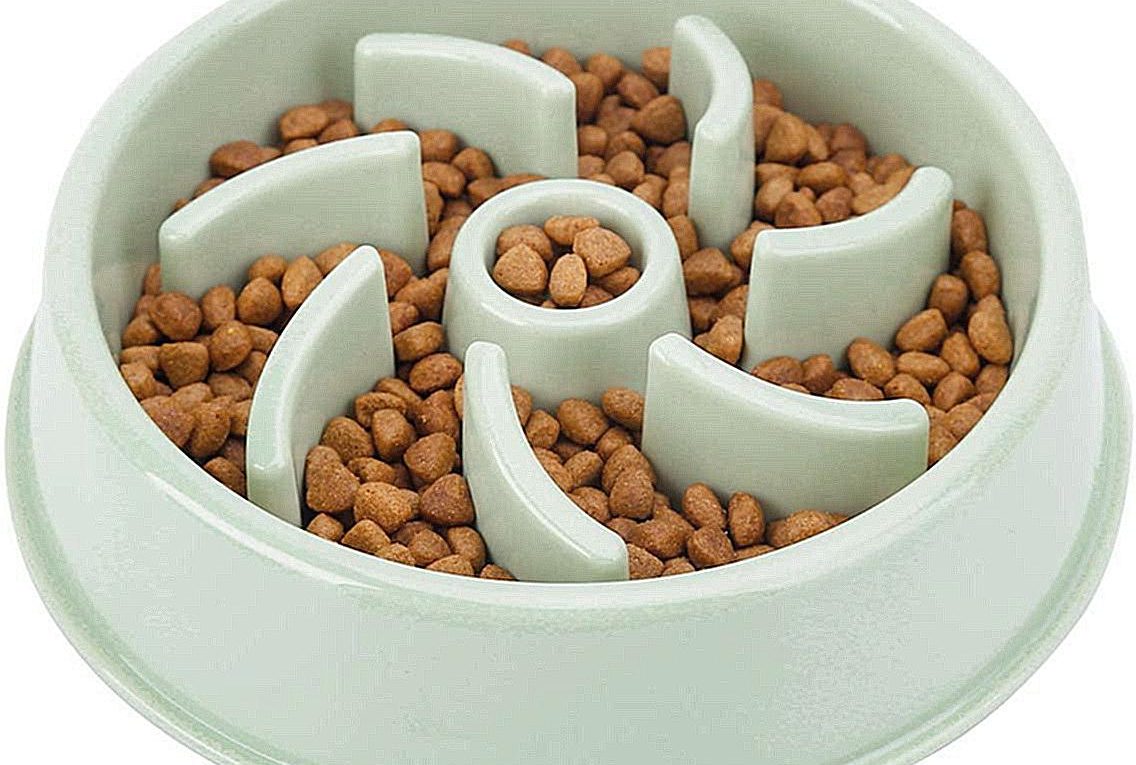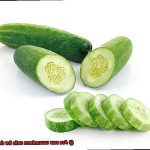Are slow feeder bowls safe for dogs?
Feeding our furry friends is a big deal. We want them to chow down in a safe and healthy way, but sometimes they just can’t resist gobbling up their food faster than a squirrel on a sugar rush. Enter slow feeder bowls – the latest trend in doggy dining that promises to curb speedy eaters and keep their bellies happy.
But are these fancy feeding contraptions really as safe as they claim? That’s the question we’re tackling head-on in this blog post. We’re going on an adventure, digging deep into the world of slow feeder bowls to uncover the truth about their safety for our precious pooches.
From funky designs to potential pitfalls, we’re leaving no kibble unturned as we explore whether slow feeder bowls are the right choice for your pup’s mealtime routine. So grab your detective hat and join us on this quest for knowledge, because your furry friend deserves nothing less than a tasty meal that’s both satisfying and secure.
The Benefits of Using Slow Feeder Bowls for French Bulldogs
Contents
- 1 The Benefits of Using Slow Feeder Bowls for French Bulldogs
- 2 Safety Considerations When Choosing a Slow Feeder Bowl for French Bulldogs
- 3 Tips to Help French Bulldogs Adjust to Slow Feeder Bowls
- 4 How to Choose the Right Slow Feeder Bowl for Your French Bulldog
- 5 Common Mistakes to Avoid with Slow Feeder Bowls for French Bulldogs
- 6 Potential Risks of Using Slow Feeder Bowls for French Bulldogs
- 7 Alternatives to Using a Slow Feeder Bowl for Your French Bulldog
- 8 What to Look For in a Quality Slow Feeder Bowl for Your French Bulldog
- 9 Conclusion
If so, you may be familiar with their tendency to gobble up their food in seconds. While it may seem cute, fast eating can lead to health issues and behavioral problems. That’s where slow feeder bowls come in. In this article, we’ll explore the benefits of using slow feeder bowls for your French Bulldog and how they can improve their overall well-being.
Promotes Healthy Digestion:
French Bulldogs, like many other brachycephalic breeds, are prone to digestive problems. By using a slow feeder bowl, you can help your furry friend eat at a slower pace, allowing for proper chewing and digestion. This reduces the risk of issues such as vomiting or regurgitation that can occur when food is consumed too quickly.
Mental Stimulation:
Boredom can lead to destructive behaviors in dogs, and mealtime is no exception. Slow feeder bowls provide mental stimulation by presenting various obstacles and patterns that require your French Bulldog to think and problem solve in order to access their food. This not only keeps them entertained but also makes mealtime a fun and engaging experience.
Portion Control:
Maintaining a healthy weight is crucial for French Bulldogs to prevent obesity-related health problems. Slow feeder bowls are designed with compartments or ridges that distribute the food evenly, preventing your furry friend from gulping down large amounts in one go. This helps regulate their portion sizes and ensures they eat at a more moderate pace.
Choking Hazard Prevention:
With their short snouts, French Bulldogs may struggle with regular bowls, increasing the risk of choking. Slow feeder bowls are specifically designed with shallow ridges or pockets that make it easier for your pup to access their food without straining or inhaling it too quickly. You can have peace of mind knowing that your furry friend is enjoying their meal safely.
Behavioral Improvement:
If your French Bulldog displays possessive or aggressive behavior during mealtime, using a slow feeder bowl can help promote a calmer and more relaxed feeding experience. The slower pace of eating reduces the risk of food aggression and creates a positive association with mealtime.
Safety Considerations When Choosing a Slow Feeder Bowl for French Bulldogs
If you’re a proud owner of a French Bulldog, you know that mealtime can be an exciting and energetic affair. But did you know that choosing the right slow feeder bowl for your Frenchie is crucial for their safety and well-being? In this article, we’ll explore the important safety considerations you need to keep in mind when selecting a slow feeder bowl for your furry friend.
Size and Shape Matters
French Bulldogs have unique facial features, including short snouts and flat faces. These brachycephalic features can make it difficult for them to eat from certain bowl designs. It’s essential to choose a slow feeder bowl that has wider and shallower channels, allowing for easier access to the food. Avoid bowls with deep or narrow channels that can frustrate your Frenchie and make mealtime a struggle.
Material Safety
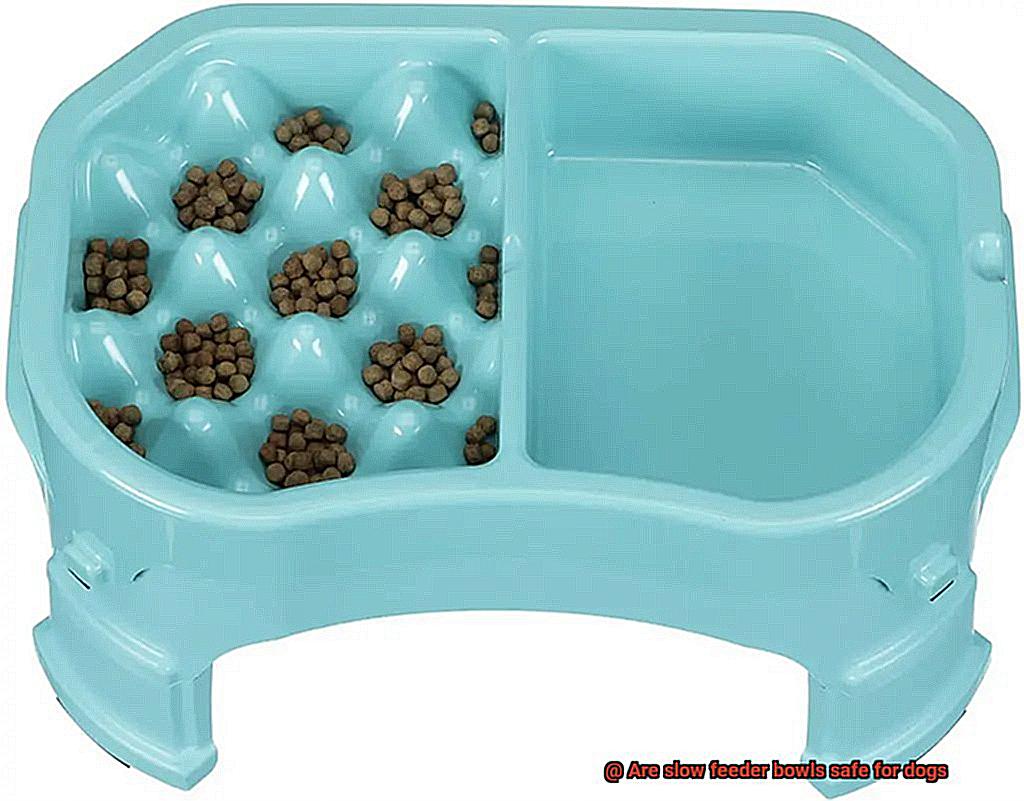
When it comes to slow feeder bowls, two common materials are plastic and stainless steel. While both are generally safe for dogs, it’s essential to ensure that they are free from harmful chemicals like BPA or phthalates. Look for bowls labeled as BPA-free or made from food-grade materials to minimize any potential health risks.
Stability is Key
French Bulldogs can be quite enthusiastic eaters, and a lightweight or unstable bowl may easily tip over during mealtime. This not only leads to frustration for your Frenchie but may also cause spills or messes. Opt for a slow feeder bowl with a sturdy base or non-slip bottom to ensure it stays in place while your furry friend enjoys their meal.
Finding the Right Difficulty Level
Slow feeder bowls come in various designs, from intricate patterns to simpler ones with larger spaces between channels. It’s important to choose a bowl that matches your French Bulldog’s eating capabilities. If the bowl is too challenging, it may lead to frustration or stress, which defeats the purpose of promoting healthier eating habits.
Supervise and Observe
No matter how safe the slow feeder bowl, it’s always crucial to supervise your French Bulldog during mealtime. Accidents can still happen, so keep a watchful eye to ensure that your Frenchie is using the bowl correctly and not getting their snout or tongue stuck in any small openings.
Tips to Help French Bulldogs Adjust to Slow Feeder Bowls
Slow feeder bowls can be a fantastic solution to promote healthier eating habits. However, some dogs may need a little extra help adjusting to these bowls. In this article, we’ll explore some tips to help your French Bulldog adjust to using a slow feeder bowl in a safe and comfortable manner.
Gradual Introduction:
Start by introducing the slow feeder bowl gradually. Mix a small amount of your dog’s regular food with some tasty treats or wet food and place it in the bowl. This will make the bowl more enticing and help your furry friend associate it with something positive.
Patience Is Key:
Be patient and allow your French Bulldog to explore the slow feeder bowl at their own pace. Some dogs may take longer than others to figure it out, so avoid rushing them or getting frustrated. Give them time to understand how the bowl works and find their own eating rhythm.
Start with Easy Patterns:
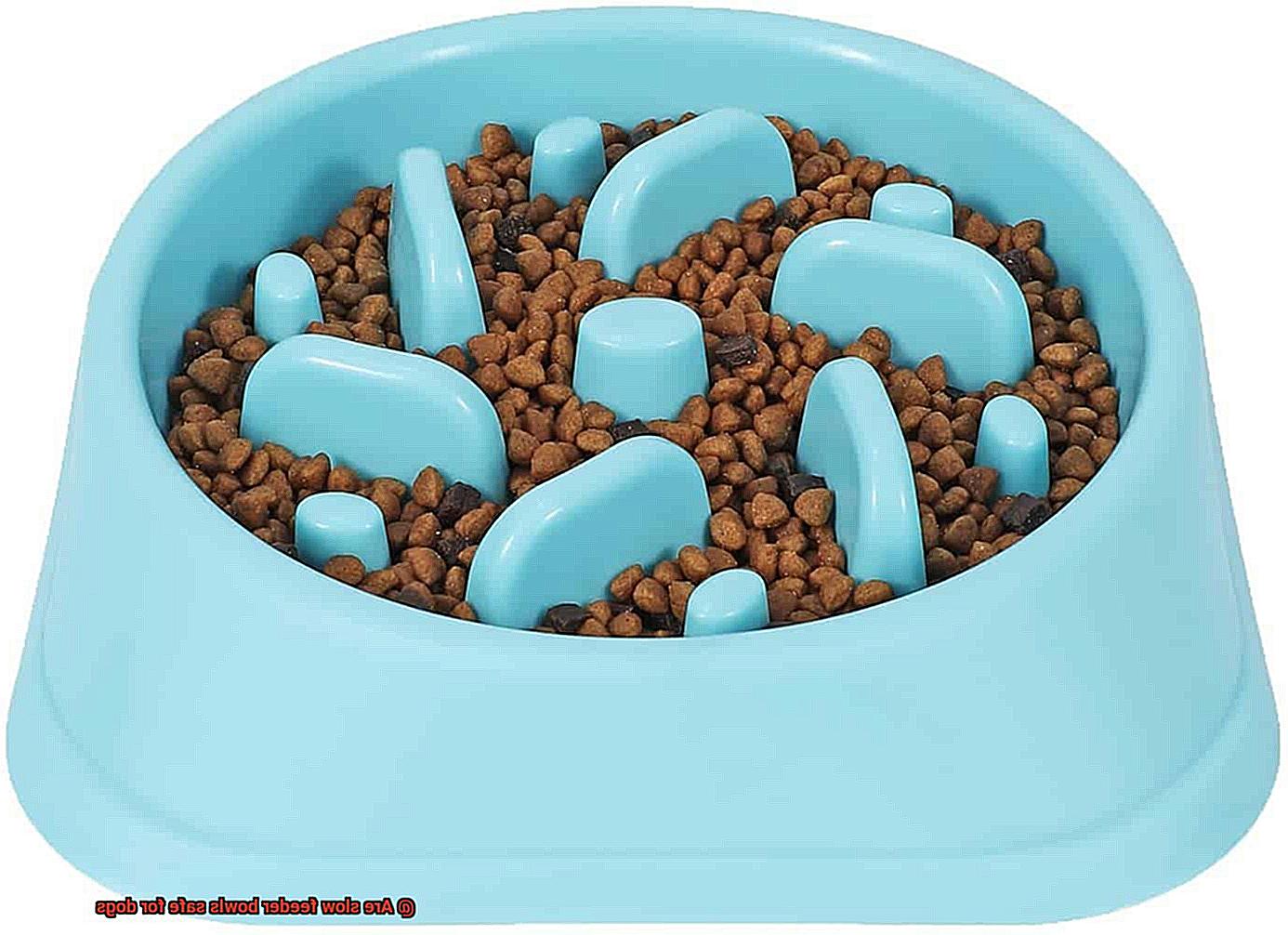
Choose a slow feeder bowl that has larger and shallower patterns initially. This will make it easier for your dog to access the food and get accustomed to using the bowl. As they become more comfortable, you can gradually introduce bowls with smaller and deeper patterns to provide more of a challenge.
Positive Reinforcement:
Whenever your French Bulldog successfully eats from the slow feeder bowl, praise and reward them with treats or affection. This positive reinforcement will motivate them to continue using the bowl and associate it with a positive experience.
Monitor Meal Times:
Initially, closely monitor your dog during meal times when using a slow feeder bowl. This will allow you to observe their progress, ensure they are not becoming frustrated or anxious, and make any necessary adjustments if needed.
How to Choose the Right Slow Feeder Bowl for Your French Bulldog
That’s where a slow feeder bowl comes in handy. In this article, we’ll explore how to choose the right slow feeder bowl for your furry friend to ensure their meals are enjoyable, safe, and healthy.
Size and Shape:
French Bulldogs have unique facial features, so it’s essential to choose a slow feeder bowl that accommodates their needs. Look for a bowl that is wide enough for them to comfortably reach the food but not so wide that they struggle to access the edges. Additionally, opt for a shallow bowl to prevent any neck or face strain.
Safe Materials:
Ensure the slow feeder bowl is made from food-grade, non-toxic materials like stainless steel or BPA-free plastic. Avoid bowls with sharp edges or harmful chemicals that could harm your pup. Dishwasher-safe bowls are also a plus for easy cleaning.
Design Matters:
Look for a bowl with raised obstacles or ridges inside. These features make it more challenging for your French Bulldog to grab large mouthfuls of food at once, slowing down their eating pace. Just remember, the obstacles should be challenging but not frustrating.
Stability:
French Bulldogs can get quite excited during mealtime, so choose a slow feeder bowl with a non-slip base or consider using a rubber mat underneath. This will prevent any accidents or spills while your dog enjoys their meal.
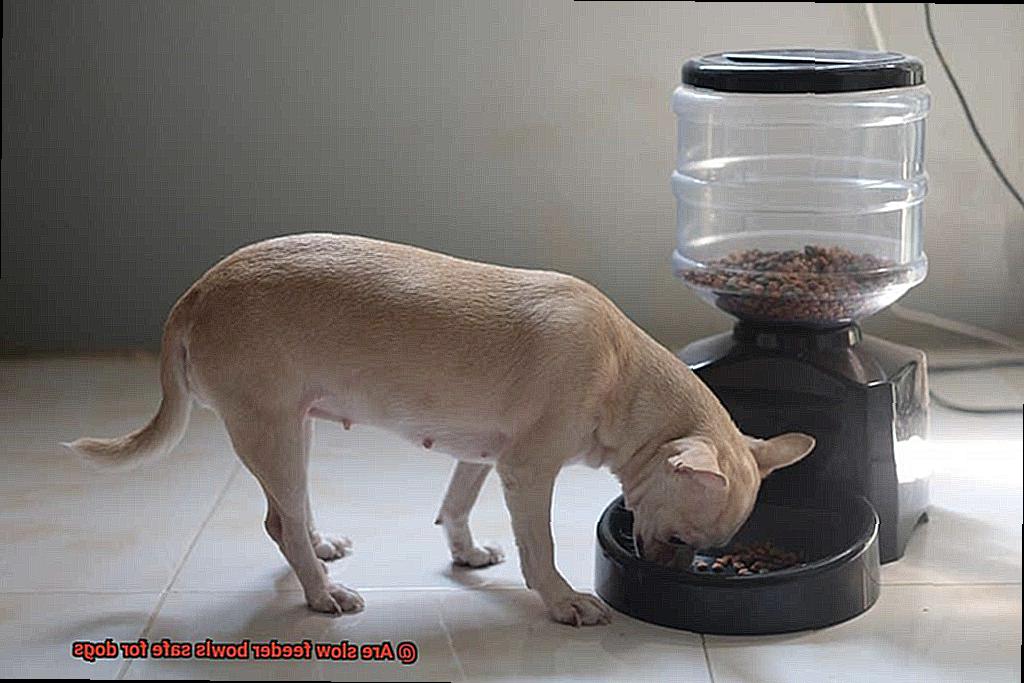
Consider Individual Needs:
Every French Bulldog is unique, so take into account any specific feeding requirements your pup may have. If they have a shorter snout or difficulty picking up food from certain bowls, consult with your veterinarian for guidance on the best slow feeder bowl option.
Common Mistakes to Avoid with Slow Feeder Bowls for French Bulldogs
Mealtime can be a delightful adventure for your French Bulldog with the help of a slow feeder bowl. These bowls are designed to slow down your dog’s eating habits and prevent them from gulping down their food too quickly. However, there are some common mistakes that owners should avoid when using these bowls. In this guide, we will discuss these mistakes and provide valuable insights on how to overcome them.
Choosing an Inappropriate Bowl:
One common mistake is using a slow feeder bowl that is too difficult for your French Bulldog to use. While the purpose of a slow feeder bowl is to make your dog work for their food, it should still be manageable for them. Ensure that the obstacles or ridges in the bowl are appropriate for your dog’s size and eating habits.
Improper Introduction:
Another mistake is not introducing the slow feeder bowl properly to your French Bulldog. Some dogs may be hesitant or confused at first when presented with a new type of bowl. Gradually familiarize your dog with the bowl by placing treats or small amounts of food in it and allowing them to explore and eat at their own pace.
Neglecting Regular Cleaning:
Not cleaning the slow feeder bowl regularly is another common mistake. Just like any other food-related item, these bowls can harbor bacteria and become dirty over time. Clean the bowl thoroughly after each use to ensure your French Bulldog’s health and safety.
Overfilling the Bowl:
Overfilling the slow feeder bowl defeats its purpose of slowing down your dog’s eating. The goal is to make your French Bulldog work for their food by navigating through the obstacles in the bowl. Follow recommended portion sizes and fill the bowl accordingly.
Lack of Supervision:
Not supervising your French Bulldog while they eat from a slow feeder bowl can lead to potential problems. Some dogs may become frustrated or aggressive when faced with obstacles in their food bowl. Observe your dog’s behavior and intervene if necessary.
Potential Risks of Using Slow Feeder Bowls for French Bulldogs
Mealtime can be an exciting experience for our French Bulldogs, but it’s important to ensure they eat at a safe and healthy pace. Slow feeder bowls have gained popularity as a solution to fast eating, but they also come with potential risks that every French Bulldog owner should be aware of. In this article, we’ll explore the potential risks associated with using slow feeder bowls and provide tips on how to mitigate them.
Choking Hazard:
Slow feeder bowls are designed with raised ridges and barriers that can make it challenging for dogs to access their food. While this may slow down their eating, it can also increase the risk of choking, especially if your French Bulldog is not accustomed to such obstacles. Monitor your dog closely during mealtime and ensure they are not overly frustrated or anxious.
Dental Damage:
The raised ridges and barriers in slow feeder bowls can put excessive pressure on your French Bulldog’s teeth and gums as they try to extract their food. Over time, this can lead to tooth fractures or wear and tear on the enamel, potentially causing dental issues. Consider using slow feeder bowls with softer materials or opting for alternative feeding methods if your dog has dental sensitivities.
Brachycephalic Breeds:
French Bulldogs are brachycephalic dogs with short snouts, which already makes breathing and eating challenging for them. Adding the complexity of a slow feeder bowl may cause additional stress and discomfort during meal times. Pay close attention to your dog’s breathing and overall well-being while using a slow feeder bowl.
Not Suitable for All Dogs:
It’s essential to consider your French Bulldog’s individual needs before using a slow feeder bowl. Dogs with medical conditions or physical limitations may struggle to access their food effectively, leading to frustration and potential weight loss. Consult with your veterinarian to determine if a slow feeder bowl is suitable for your dog.
Hygiene Concerns:
Slow feeder bowls often have small crevices and indentations that can trap food particles and bacteria, making thorough cleaning a challenge. Regularly inspect the bowl for any signs of mold or bacterial growth, and clean it thoroughly to ensure your French Bulldog’s health and safety.
Alternatives to Using a Slow Feeder Bowl for Your French Bulldog
French Bulldogs are known for their adorable flat faces and unique personalities. However, their brachycephalic anatomy can make it difficult for them to use traditional slow feeder bowls. If you’re looking for alternatives to slow down your French Bulldog’s eating pace, here are some options to consider:
- Puzzle Toys or Interactive Feeders: These toys are designed to mentally stimulate your dog while slowing down their eating. They typically have compartments or hidden compartments where you can place small amounts of food. Your French Bulldog will need to work at extracting the food, which can help slow down their eating speed.
- Snuffle Mats: A snuffle mat is a textured surface made of fabric strips or fleece tied together. You can hide small amounts of food within the strips, and your French Bulldog will have to use their sense of smell and foraging skills to find the food. This not only slows down their eating but also provides mental stimulation.
- Smaller, More Frequent Meals: If your French Bulldog tends to eat too quickly, try feeding smaller, more frequent meals throughout the day. Instead of two large meals, divide their daily portion into four or five smaller meals. This can help prevent them from overeating and promote slower eating habits.
- Elevated Feeding Stations: Elevating your French Bulldog’s food and water bowls can help improve their posture while eating and reduce strain on their neck and back. This can also help slow down their eating pace as they are in a more comfortable position.
- Food Dispensing Toys or Treat Balls: These toys require your French Bulldog to roll or manipulate the toy to access the food. They provide entertainment and mental stimulation while also slowing down their eating.
Remember, it’s essential to monitor your French Bulldog while using any alternative feeding methods to ensure they are comfortable and safe. If you have concerns or questions about your dog’s eating habits, consult with your veterinarian for guidance and advice.
What to Look For in a Quality Slow Feeder Bowl for Your French Bulldog
In this guide, we’ll dive into what features to look for when selecting a quality slow feeder bowl for your beloved Frenchie. By considering these factors, you can ensure that mealtimes are not only safer but also more enjoyable for your furry friend.
Size and Design:
Choose a slow feeder bowl that is the perfect size for your French Bulldog. It should be large enough to hold their meal comfortably while still providing enough obstacles or ridges to slow down their eating pace. Aim for a design that strikes a balance between challenging and enjoyable for your pup.
Material Matters:
Opt for slow feeder bowls made from safe and non-toxic materials like stainless steel or ceramic. These materials are not only durable but also easy to clean, ensuring a hygienic feeding experience.
Stability is Key:
Look for a slow feeder bowl with a non-slip base or rubberized bottom. This will prevent your excited Frenchie from accidentally knocking over the bowl while diving into their meal.
Safety Features:
Consider slow feeder bowls with built-in safety features, such as anti-gulping mechanisms or rounded edges. These additions can help prevent choking hazards and ensure your French Bulldog eats at a controlled pace.
Easy to Clean:
Nobody wants to spend a lot of time cleaning up after mealtime. Choose a slow feeder bowl with a simple design that is dishwasher-safe or easy to hand wash. Avoid bowls with intricate patterns or crevices that can trap food particles and make cleaning a hassle.
Durability That Lasts:
French Bulldogs are known for their strong chewing tendencies. Select a slow feeder bowl that can withstand their chewing habits without breaking or posing a choking risk. High-quality materials and reinforced edges are essential in ensuring longevity.
Conclusion
In conclusion, slow feeder bowls are indeed safe for dogs.
These innovative feeding tools offer numerous benefits for our furry friends. By slowing down their eating pace, they can prevent digestive issues such as bloating and vomiting.
Additionally, slow feeders stimulate mental engagement and provide a fun challenge for dogs during mealtime. The unique design promotes natural feeding behaviors and prevents gulping or inhaling food, reducing the risk of choking or regurgitation.
